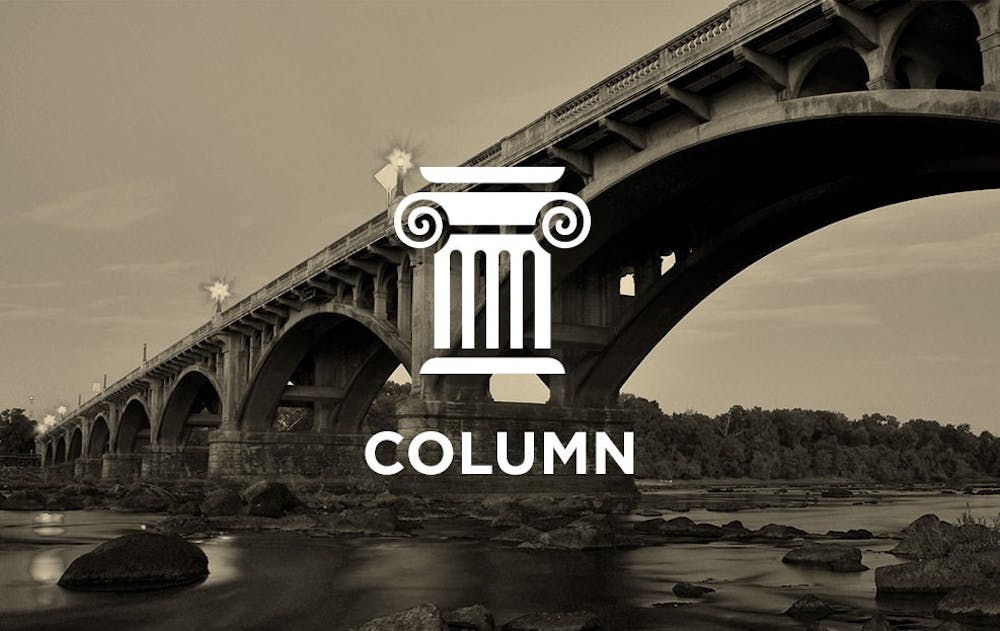In a world of wild and interesting sexualities, gender identities and romantic predilections, stuffy conservative traditionalists can find a lot to hate. Whether it's people participating in workplace discrimination for newly married same-sex couples, people still calling Caitlyn Jenner by her dead name or religious sects pushing the heteronormative monogamist’s agenda, there are so many people out there who hate queerness. In this ever-growing world of discovery and hatefulness, the term “homophobia” no longer covers it all. American conservatives hate way more demographics than just gay people. So for those of you who hate all things LGBTQIA*, the word for you is queerphobic. Put that on your résumé.
And to all those to whom this all-encompassing term applies, you can also put misogyny down. Queeerphobia isn’t just the queer person’s problem. Queerphobia is also every woman’s problem, because every problem traditionalists have with sexuality, gender identity, romantic attraction and any other wonderful type of queerness stems from a deeply routed and systematically reproduced sexism.
First let’s talk about the most familiar, homophobia. Why is it that so many people are threatened by gay people? Why is one of the most common questions posed to a same-sex couple, gay or otherwise, is “So, which one is the girl/guy?” Not only is this a fabulous example of heteronormativity rearing its ugly head, it also underlines the main problem people have with gayness: One person must be acting as a gender he or she is not. That is wrong. Gay men have been persecuted for centuries because straight people can’t handle that a man might reduce himself to the position of a woman. Lesbians are under fire because woman are trying to act like men. Whether we’re talking about the physical act of penetration or the traditionally female role of homemaking, heteronormative people can’t handle a man wanting to bottom or a woman being a primary earner. And like all poorly understood anxieties, they meet it with hate and vitriol.
Transphobic is the new, cool thing to be, now that homophobia is old news. Trans people get just as much religious hate as gays, usually stemming from the argument that God doesn’t make mistakes like plugging souls into the wrong bodies. But plenty of people hate trans people simply because they don’t acknowledge them as “real women/men.” Any good “tranny” episode of Jerry Springer will play host to everyday people having their gender identities invalidated by other everyday people. How does this relate to sexism? Similar to the perceived overstepping of established gender boundaries that create the basis for homophobia, traditionalists fight back against the idea than any man should reduce himself to being a woman, and than a woman has no right to try to become a man. This is seen as an attempt to subvert the oppressive roles and rules laid out by our patriarchal society.
And now to the much larger category, straight queerness. Lots of conservative traditionalists complain that the LBGTQIA* acronym is too long, but it's that long because we fit a lot of different groups of people in there. Under that umbrella is also room for straight queerness, which typically manifests in alternate romantic identities. A person can be heterosexual, and still be biromantic, polyamorous or aromantic. The different ways people can love other people aren’t just limited to their genitals, which for some reason queerphobics are incredibly concerned about. People can also have varying romantic identities, which are even less well known and understood than sexualities.
In our heteronormative culture, it’s expected that couples (straight couples, obviously) should settle down in neat little pairs, have 2.5 children and raise them to be heterosexual, heteroromantic little angels to continue the cycle. Inherent in this expectation is the belief that women should be married. Yes, we believe those women should be marrying men, but in a society that shames female sexuality and emphasizes the control and structure of the married, nuclear family, the women’s behavior is especially scrutinized. A single woman in her 30s or 40s is usually labeled as sad and lonely, or crazy and undateable, assuming either that she naturally wants to be married and thusly must be sad that she isn’t, or that she should be married, and if she isn’t, then there’s something wrong with her. In reality, she might just be a lovely, aromantic human who doesn’t feel romantic attraction and thusly might have no desire for marriage. Anytime a woman deviates from the assigned role of future wife and mother, society responds with either pity or shame.
So if you’ve been struggling with self-identification, if you’ve spent years trying on different classifications and labels and found that none of them fully encompass all of the varying facets of you, if you have trouble listing all the different kinds of people you hate, then maybe queerphobic is the title you’ve been searching for. It covers that full, long acronym that you don’t have enough mental space to accommodate as well as all women who don’t identify as some kind of queer.

